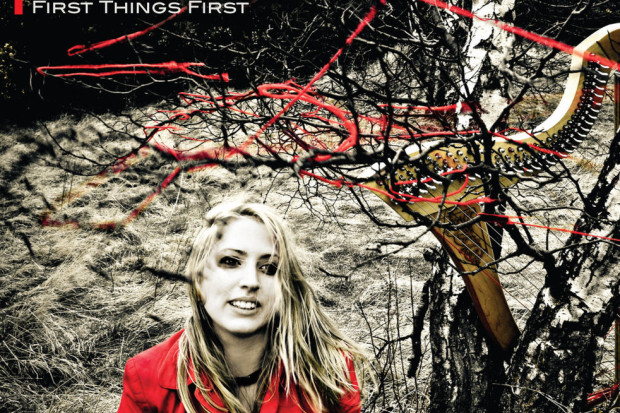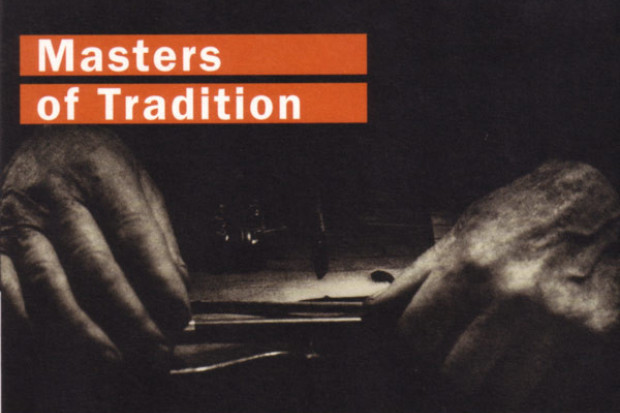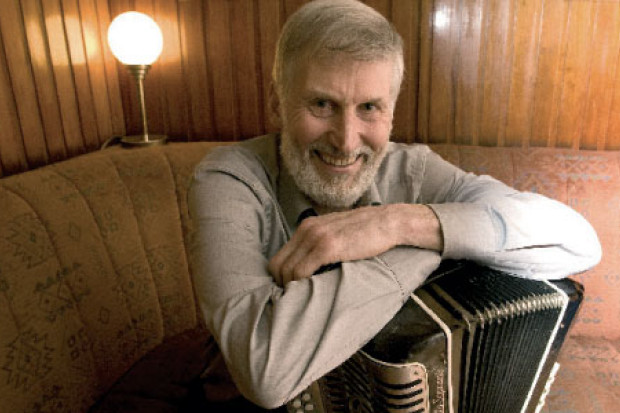The Other Side of Euro-Paddy Land
The last lines of Desi Wilkinson’s article entitled ‘Euro-Paddy Land’ (JMI, Vol. 2 No. 5) are probably the ones I found most intriguing. He points out that ‘Irish music on the European continent is a diasporic music in an environment that has no history of large-scale Irish emigration. This is what makes it different, at least in terms of its social context, to much of the Irish music played in other parts of the English-speaking world.’
As Wilkinson noted, Europeans are not only listening to the music, many have chosen to learn how to play it. They seek to join the community of Irish traditional music. The question is how to do that in an environment that lacks ‘large-scale Irish emigration’. Their solutions have resulted in a multi-layered context for their participation.
For many their participation is solitary. Their only or primary contact with the tradition is through the mediascape of recordings, books and the internet. Others seek out a social context within their localities. They attend local Irish workshops and music festivals. They may also create their own social context for the music, organising local sessions and forming bands. For those who can afford it the ultimate context is that of the core tradition. Many make the pilgrimage to Ireland each summer and some have made Ireland their home.
Much of my experience with Irish traditional music has been in New York City, a major center of the diaspora and where I have lived most of my life. It is perhaps the closest center to Ireland itself. Non-Irish musicians seeking to learn Irish traditional music in New York are essentially tapping into the source of the tradition. Here they can play alongside Irish and Irish-American musicians who have been immersed in the music all their lives. Fiddle players like New Yorker River Tobias have the opportunity to learn from older Irish players such as Paddy Reynolds. Others, such as Lisa Gutkin, also a New Yorker, are able to find the immersion they seek in their home town.
New York based French fiddler Patrick Ourceau is a sought after performer and teacher of Irish traditional music. However, his first immersion was not in New York or in Ireland but in Paris. In sessions at pubs such as Johnny’s and the Goblet Argent, Patrick met players such as Kevin Crawford and the Shannon family. It was then that he also met Clare concertina player Gearóid Ó hAllmhuráin with whom he has recorded an acclaimed album called Tracin (Celtic Crossings, California, 1999).
Most European non-Irish musicians interested in playing Irish traditional music are not as lucky as Patrick. Paris has a well-established scene that is frequently visited by musicians from Ireland. Musicians in other parts of Europe are much more isolated. They often begin as solitary practitioners, their only connection to the tradition being recordings, tune books and tutors.
Swedish multi-instrumentalist Jeff Lindvist’s interest in Irish traditional music began with a recording. He told me ‘I listened to my Dad’s Pogue’s LPs and found some interesting melodies.’ (email, 7 May 2001). He then spent the next five years playing to his CDs before participating in his first session.
What solutions have these musicians found to their isolation? One approach is to reach out through the internet. This is where I first met Jeff and fellow Swedish resident, English uilleann piper Thomas Johnson. A vast network of interest in Irish traditional music encompasses much of the world. On the internet musicians can exchange information, gather tunes, buy recordings or other merchandise and even take lessons on-line. The Scoiltrad website (www.scoiltrad.com) offers access to Irish musicians and their knowledge through image, sound, notation and text. While the site is certainly interactive more significant contact may be made through lists such as IR-TRAD (http://listserv.heanet.ie/irtrad-l.html). It is here that they can join the community of musicians playing Irish traditional music.
Still, not even the slick media presentation of Scoiltrad can replace the experience of sitting next to a traditional musician and your foot falling into time with their swing, their rhythmic sense. A ‘cyber-community’ may engender a sense of belonging but it is not really a ‘social context’. European musicians in search of physical contact with the tradition may choose to attend one of the growing number of festivals and workshops that have popped up all over Europe.
One such workshop occurred this past June in Prague in the Czech Republic. Jan Rab, of the group Czech band Asonance, organised a weekend for Czech musicians to learn how to play Irish traditional music. They held classes in a school on the outskirts of the city and shared the experience of playing in sessions together. While one of the teachers was Irish, the rest were European converts to the tradition, passing on what they had learned from Irish musicians. Fiddle instructor Sabine Pichler first learned fiddle from Hispanic-American Jose Sanchez who in turn learned from Irish-American Brian Conway. She has become an excellent fiddle player dedicated to passing on the tradition.
Jan is part of a growing Irish music scene in Prague. Here Czech musicians have created their own social context for playing Irish traditional music. Fellow Czech musician Pepa Janicek has long been interested in music from outside of his homeland. He is a member of the Czech rock band The Plastic People of the Universe whose initial inspiration came from the American band The Velvet Underground.
Pepa was first exposed to the folk music of the UK and Ireland through bands such as The Dubliners, Steeleye Span, and The Incredible String Band. As Wilkinson suggested, The Dubliners were extremely popular in Europe during the late 1960s and early 70s. Pepa’s involvement in Irish music is a direct result of the festivals, concerts and pub gigs that Wilkinson discussed.
A few years after that first taste of ‘Celtic’ music a musician told Pepa he had to hear the ‘real’ stuff. Hearing The Bothy Band and The Chieftains Pepa fell completely in love with Irish music. He soon took up the banjo and formed a series of bands that played Irish music for Czech audiences.
Pepa and others have also organised regular sessions such as the one I attended at Molly Malone’s. I arrived to find Pepa on guitar and banjo along with other Czech musicians playing low whistle, bouzouki, fiddle and button accordion. The one Irish player was Jonny Tennent on bouzouki, vocals and bodhrán. The atmosphere of the session was not unlike one in Ireland or New York. Familiar tunes were played with a sprinkling of songs. There was also an air of familiarity among the musicians. They were comfortable playing together, moving from set to set without a lot of discussion. Later in the evening a young Czech girl came in with a whistle. She had come seeking a social context for her playing and had found it right there in Prague. Here the music could come alive for her in ways it never could sitting alone with notes on a page or letters on a computer screen.
The next day I got a message from Pepa asking if I wanted to come to a session. He and Jonny came to collect me and after picking up two other musicians we headed out into the Czech countryside. We came to a stop outside of a country pub that was so full of drunken Czechs singing Czech drinking songs that we couldn’t get inside. So, we ate our supper of fried cheese and chips outside. Soon a woman came up the road and led us to another pub nearby. This one was nearly empty and we took it over for our session. The experience was not unlike impromptu sessions I had found in Ireland. It was music played not for money or prestige but for the sheer joy of it. It was an illustration of the fact that for many musicians the attraction of Irish traditional music goes beyond the melodies themselves. They are also seeking an enjoyable social context for music making. This is the ‘conviviality’ and ‘culturally accessible Euro-Mardi Gras’ that Wilkinson mentions. Pepa has gathered players around him in order to create that context. Both the box player, Lukas Radnostny, and the bodhrán player, Martin Sedlacek, first heard Irish music from Pepa.
As I have mentioned and Wilkinson briefly discussed, non-Irish musicians have also formed their own bands. The Czech Republic is home to several bands that play Irish traditional music. Jan Rab’s band Asonance is one of the oldest with a history stretching back twenty years. The band Dún an Doras was founded by bouzouki player and percussionist Rene Starhon. Rene is a dedicated musician with a variety of musical interests.
For those who can afford it, travelling to Ireland is the ultimate solution to their isolation from the tradition. This is also the place where they acquire models for creating a substitute social context in their home countries.
At this year’s Willy Clancy Summer School in Miltown Malbay I met a number of other non-Irish musicians, including Thomas Johnson and Jeff Lindqvist. The non-Irish who flock to festivals such as the Willy Clancy Week are entering into the social context of the tradition’s core. However, their relationship to that context is much more different than that of a native player or even many Irish-American musicians. On arriving in Miltown Malbay, non-Irish musicians have an array of choices for participation. They may choose just to observe, attending sessions and concerts, playing little or no music themselves. Others may enrol in the classes and play in sessions.
An increasing number of musicians have gone a step further in their participation. They have made the major life choice of living in Ireland. Some have come to Ireland for the music. Others discover it once they arrive. These musicians often become full participants in the social context of Irish music in Ireland. Danish box player Anders Trabjerg now resides in Galway and has come out with a well-received recording called Boxed. Galway is also home to Spanish uilleann piper Lorenzo Morales as well as Italian musicians Vincent DeMauro and Ezekiel Mazzanti. When I lived in Cork City I shared a house with two French musicians who played fiddle and flute.
As Wilkinson’s article illustrates, Irish music has become a widely popular genre within European musical culture. It has become what ethnomusicologist Mark Slobin calls a ‘traditional transnational’ music.1 Such a definition is in keeping with Wilkinson’s suggestion that it ‘has occupied the terrain of the Esperanto (or English) of Western European folk-music.’ This leads us to question why so many European musicians have taken up musics with no connection to their ethnic background. Wilkinson observes that Irish traditional music is ‘different, but it does not feel excessively foreign.’ This is a comment I have heard from numerous European musicians.
It may also be a matter of the choice afforded by the global musical superculture. Mark Slobin suggests, ‘Today, the range of musical experience grows ever wider in Euro-American societies, so the gap between a supposed musical lineage and free choice constantly narrows.’2 Fiddler Patrick Ourceau affirms this notion. Patrick told me ‘I feel like I’m part of the fact that the world is getting closer together. It is possible for a man like myself in France or someone in Japan to hear this music and want to play it and to play it.’ (Interview, 6 March 2000).
The social context for European non-Irish musicians playing this ‘traditional transnational’ music is indeed quite different from the context of the tradition’s core in Ireland and major areas of the diaspora. The levels of the European context are largely levels of access or reactions to a lack of access to the tradition. Irish musicians have reached out to provide that access both through recordings, books, the internet and through live interaction.
It seems that personal contact is the most important. Information can be shared through the media, but can it teach us what we learn not through our ears and eyes but through our whole bodies? In person you can feel the swing of other players, hear different versions of tunes played on different days, catch subtle elements of performance practice. I think this is why European musicians seek out workshops, festivals and gigs, create their own scenes, and make the pilgrimage to Ireland. It is the source, the core of the tradition. These non-Irish musicians are seeking connection, ultimately a physical connection, to their chosen music. The result is the multi-leveled nature of the European context.
Notes
1. Mark Slobin, Fiddler on the Move: Exploring the Klezmer World (Oxford University Press, 2000), p. 19.
2. Mark Slobin, ‘Micromusics of the West: A Comparative Approach’, EM 36:1 (1992), pp. 1-87 (p. 37).
Published on 1 November 2002
Margaret (Meg) Farrell is a singer and guitar player. She is in her second year of the PhD program in ethnomusicology at CUNY (City University of New York) Graduate Center. Trans-cultural musical participation is one of her major research interests along with the international movie musical.














